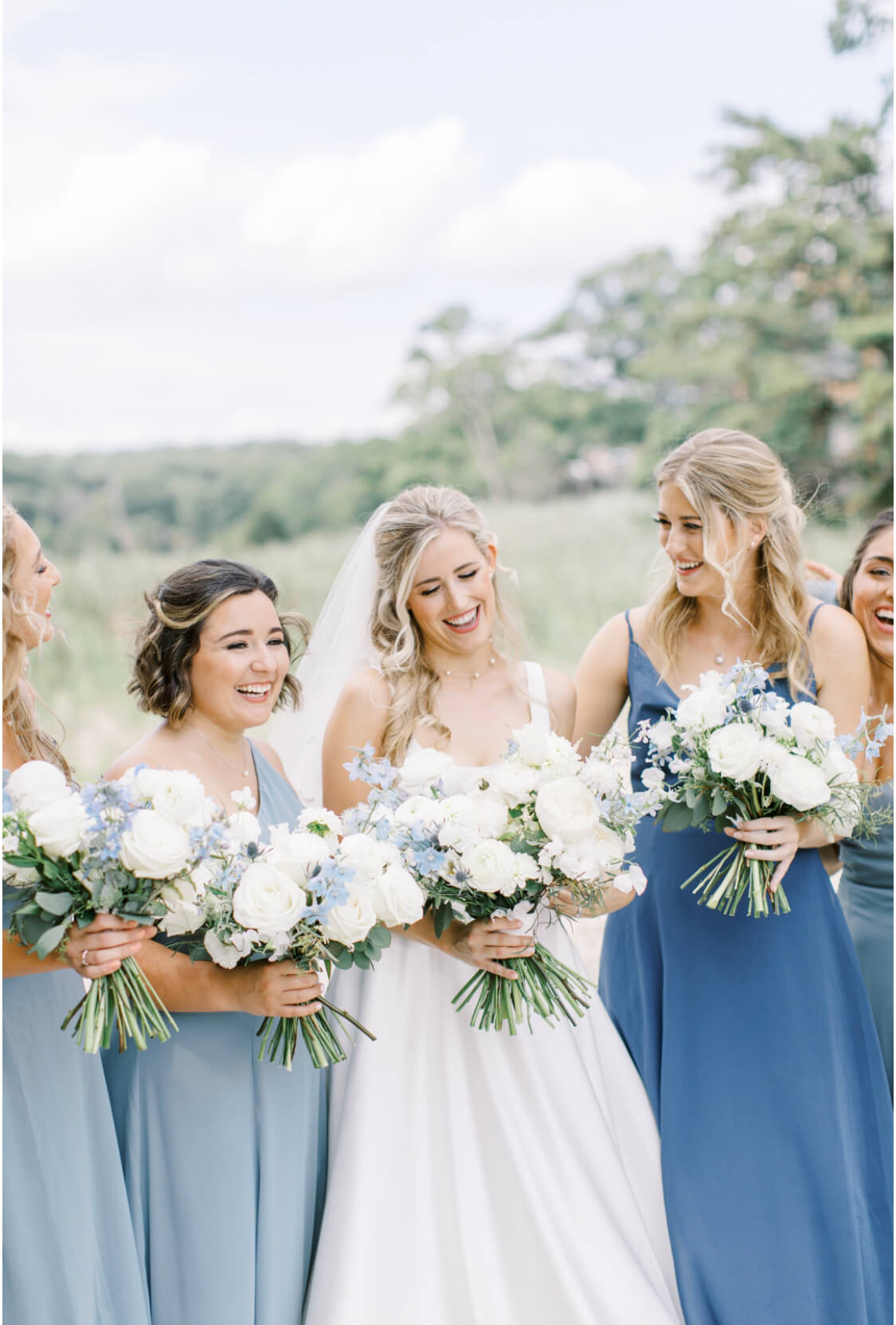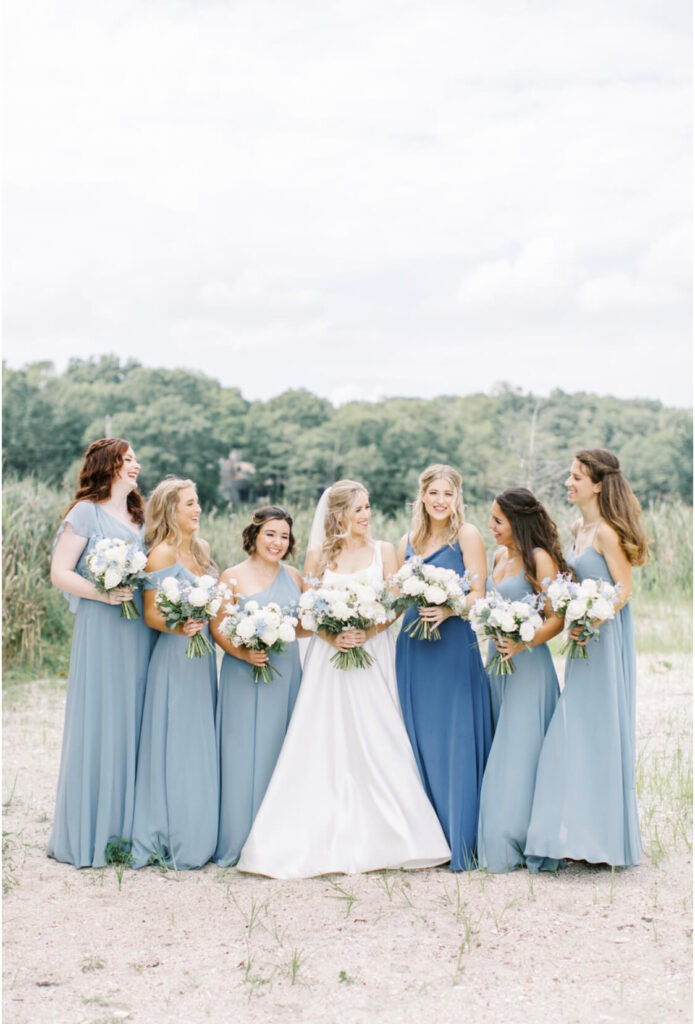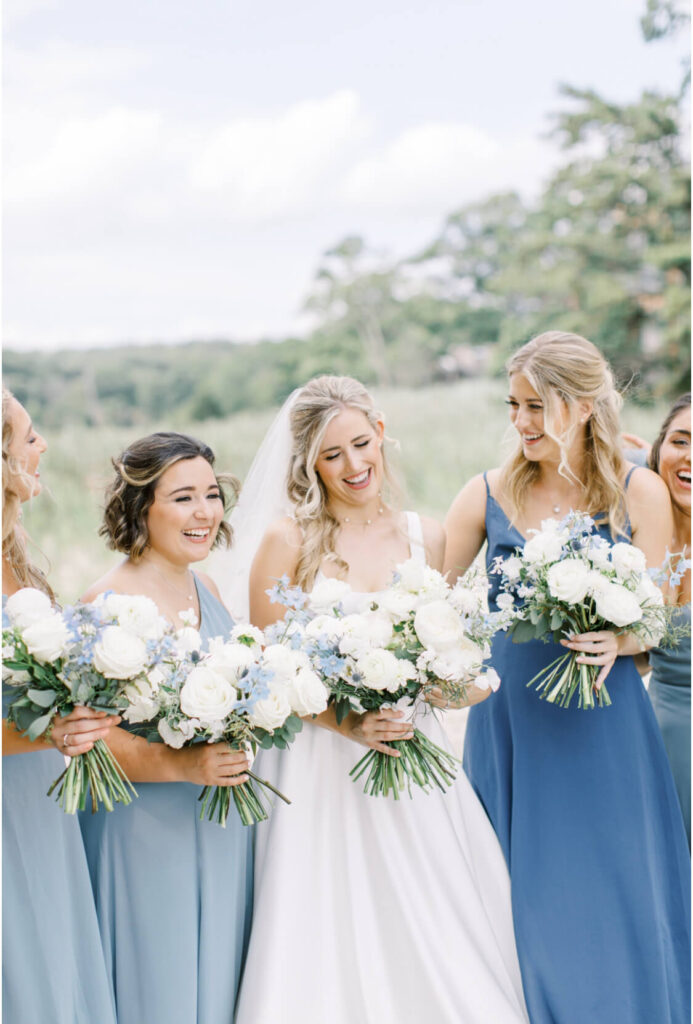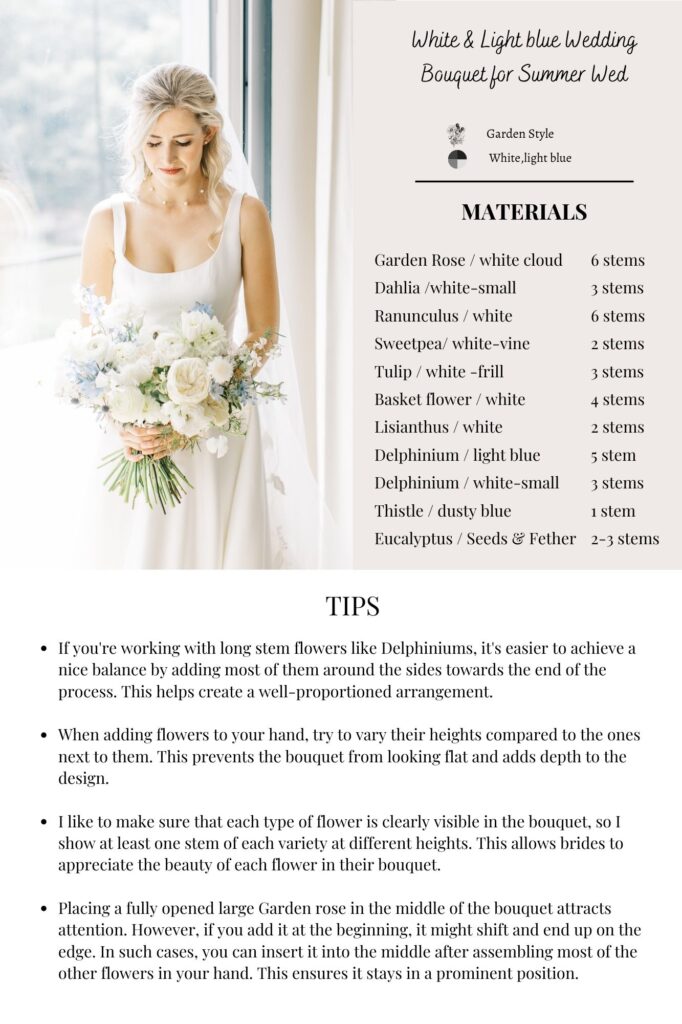About
Blog
Stemslider
Workshops
Bouquet Recipes
Shop
New mini-StemSlider: 15% off with Bundless & FREE Vase & Engraving✨
Browse around
topics
Hello Everyone!
floral designer + educator
I'm Koko
I'm floral designer, gardener and your flower bouquet coach. I'm so glad you're here. Let's enrich your bouquet skills together! Read my story
Bouquet Recipe: White & Light Blue Wedding Bouquet for Summer Wed

Posted In
June 30, 2023
Posted On
White & light blue wedding bouquet for summer weddings can create an elegant, sophisticated yet relaxed atmosphere. Since we are located near the shoreline, surrounded by the ocean, lakes, ponds, and rivers, I’ve had many chance to design flower bouquets using the lovely combination of white and light blue.

These photos of white & light blue wedding bouquet are from August wedding, and I had the opportunity to source beautiful flowers like Dahlias, Delphiniums, Basket flowers, Lisianthus, Eucalyptus, and Sweetpeas from our local growers. To complement the selection, I also added Garden roses, Ranunculus, Thistles, and Tulips from wholesalers.
Since light blue fresh flowers (without dye) are limited in variety, I typically opt for Delphiniums, Thistles, Tweedias, or Nigellas to add a touch of light blue as accents in the arrangements.

In this bouquet, I incorporated Delphiniums as the main line flowers, Roses as the main focal flowers, and Eucalyptus as the filler. To achieve a mix of textures, I also included Basket flowers, Thistles, and Frilled Tulips, adding extra visual interest and varied textures to the bouquets.

I have created a list of materials needed for the white & light blue wedding bouquet and also provided 4 tips to help you create beautiful garden-style bouquets.
I hope this information is useful for your upcoming summer wedding, featuring a beautiful combination of white and light blue!

Material
- Garden rose ( white cloud) – 6 stems
- Dahlia ( white- small) – 3 stems
- Ranunculus ( white) – 6 stems
- Sweetpea ( white-vine) – 2 stems
- Tulip ( white-frill) – 3 stems
- Basket flower ( white) – 4 large stems
- Lisianthus ( white) – 2 stems
- Delphinium ( light blue Bella) – 5 stems
- Delphinium ( white – small) – 3 stems
- Thistle ( dusty blue) – 1 stems
- Eucalyptus ( seeds, feather) – 2-3 stems
4 Tips to make a garden-style white & light blue wedding bouquet
- If you’re working with long stem flowers like Delphiniums, it’s easier to achieve a nice balance by adding most of them around the sides towards the end of the process. This helps create a well-proportioned arrangement.
- When adding flowers to your hand, try to vary their heights compared to the ones next to them. This prevents the bouquet from looking flat and adds depth to the design.
- I like to make sure that each type of flower is clearly visible in the bouquet, so I show at least one stem of each variety at different heights. This allows brides to appreciate the beauty of each flower in their bouquet.
- Placing a fully opened large Garden rose in the middle of the bouquet attracts attention. However, if you add it at the beginning, it might shift and end up on the edge. In such cases, you can insert it into the middle after assembling most of the other flowers in your hand. This ensures it stays in a prominent position.

Photos by Krista Jean Photography
Related
Pin
Share
Leave a Reply Cancel reply
Previous Story
next Story
© 2025 Koko Floral Design, LLC
Join Me on Insta
How to Effortlessly Make a Loose & Airy Cascading Bouquet
I'm so glad you're here. Let's elevate your bouquet-making skill together!